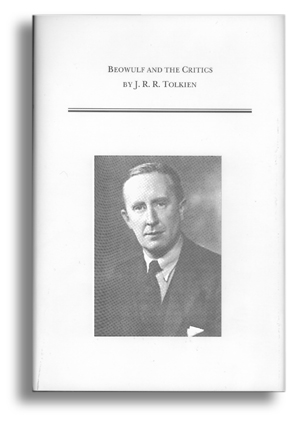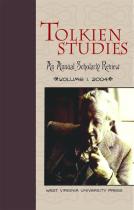
How Tradition Works
A Meme-Based Cultural Poetics of the Anglo-Saxon Tenth Century
How Tradition Works examines the ways traditions are created, constituted, modified and recognized. Expanding and revising "memetic" theory, the book analyses the culture of the tenth-century English Benedictine Reform. How Tradition Works shows how this flowering of culture can be traced to the reliance by Anglo-Saxon monks upon unchanging written rules, the Rule of St. Benedict and the Regularis Concordia. The book also examines the corpus of Old English wills, the Old English Rule of Chrodegang, and the 'wisdom poems' of the Exeter Book. This interdisciplinary study is valuable for specialists in evolutionary theory and memetics, Anglo-Saxon studies, and scholars interested in Oral Tradition Theory. How Tradition Works provides researchers with new methodological tools as well as showing how these tools can work to untangle the intricacies of cultural change and stasis. |
(ISBN-10: 0-86698-350-3, ISBN-13: 978-0-86698-350-1 / MR 306 / $47,
£38)
published by
Arizona Medieval and Renaissance Texts and Studies
Arizona Center for Medieval Studies, Tempe, AZ
Click here to buy this book from Amazon.com
Click here to buy this book directly from MRTS
Other Books by the author:
.... .......................
....................... .............
............. ............
............
Beowulf and the Critics ......................Tolkien Studies I................Tolkien Studies 2...................Tolkien Studies 3.
Abstract:
|
Tradition shapes every facet of cultural production and change, but there exists no effectively descriptive theory of tradition that explains how traditions are created, constituted, modified and recognized. This book remedies this lack by showing how traditions are created and how they persist. Traditions are replicating entities that use human minds to copy themselves. They therefore can be studied using Darwinian theory, and in this book I have applied these methods (often called "memetics," the study of "memes," developed by Richard Dawkins, Daniel Dennett and Susan Blackmore) to the study of a sophisticated culture: the revival of learning and literature in England in the tenth century known as the Benedictine Reform. While other authors have used Darwinian theory to examine hypothetical Pleistocene hunter-gatherer societies or elements of popular culture, How Tradition Works applies, tests, extends and revises meme-theory by engaging with the complexities of history and culture. In the book I show how the flowering of culture in the tenth century can be traced to the reliance by Anglo-Saxon monks upon unchanging written rules (the Rule of St Benedict and the Regularis Concordia) which provided a level of stability (tradition) upon which the monks were able to build a new English culture. The different ways traditions replicate and mutate are illustrated by Benedictine ideas and styles escaping from the restricted environments of the monasteries and spreading, like an epidemic, through the wider culture. Meme theory here not only explains how such a small minority were able to exert vast influence, but it uncovers previously hidden links between seemingly disparate texts and cultural practices. Valuable for specialists in evolutionary theory and memetics, Anglo-Saxon studies, and scholars interested in Oral Traditional Theory, How Tradition Works provides researchers with new methodological tools as well as showing how these tools can work to untangle the intricacies of cultural change and stasis.
|
PROSPECTUS
|
1. Audience and Distinctiveness This monograph has the potential to reach and influence an audience of significant size. It is to my knowledge the first book to investigate the intersection of evolutionary theory and the detailed historical and literary study of a specific culture. Other books apply evolutionary epistemology to hypothetical hunter-gatherer societies in the Pleistocene or examine pop-culture phenomena. How Tradition Works is thus of general interest to humanities researchers in literature and cultural studies because it addresses one of the fundamental problems for the study of culture: how traditions are created and maintained, and how they shape societies and literatures. Furthermore, because How Tradition Works uses concepts and methodologies borrowed from evolutionary biology, the work should be of interests to researchers working on this topic, particularly investigators in the emerging field of "evolutionary epistemology" (for example, the interdisciplinary Epistemology Group led by John Ziman). Readers interested in the intersections of evolutionary theory and cultural theory who have been drawn to this field from the work of Susan Blackmore, Richard Dawkins and Daniel Dennett would also find much of value in How Tradition Works. Scholars working in the field of Oral Traditional Theory will also be interested in the methodologies and conclusions, because I show how some of the techniques of Oral Theory may be usefully applied to texts that are not oral-derived. Finally, the book makes a significant technical contribution to Anglo-Saxon history and literary studies. While it is more specialized and scholarly than, say, Stephen Pinker’s How the Mind Works or E. O. Wilson’s Consilience, How Tradition Works may draw on the upper end of the audience for these (and similar) popularizations of evolutionary theory. 2. Author’s Credentials My training and technical research for the past ten years has focused on the problems of tradition, inheritance and the reproduction of culture. My dissertation, which was directed by Allen J. Frantzen, was on the topic, and my earlier graduate work in Oral Theory was supervised by John Miles Foley. I have numerous and significant publications on Anglo-Saxon literature, children’s literature, and the uses of medieval traditions in 20th-century literature. I recently completed editing Beowulf and the Critics, a previously unknown book of Beowulf criticism from which J.R.R. Tolkien drew his celebrated 1936 British Academy lecture: the edition will be published in the summer of 2002 by Medieval and Renaissance Texts and Studies. The Tolkien Estate gave me permission to edit this manuscript, and I am working with the Estate to edit and publish Tolkien’s translation of Beowulf and his unpublished commentaries on the poem. While I do not have formal training in evolutionary biology, I have followed research in this field for the past seven years and was able to spend a research leave in the spring of 2001 reviewing the most recent scholarship. I have also had the benefit of informal guidance by biologists John Kricher (author of The Neotropical Companion) and Betsey Dexter Dyer (author of Tracing the History of Eukaryotic Cells) at Wheaton College. I have also written a textbook for Old English (King Alfred’s Grammar) and devised a companion computerized teaching aid, both of which are being used not only at my home institution but at the University of Leiden in the Netherlands and the University of Massachusetts at Amherst. 3. Production The completed book should require 275-300 pages (in manuscript it is 351 pages in 12-point Palatino, 1.5 spacing). There are 12 tables, 5 black and white graphs, and 3 black and white maps. The tables were generated in Microsoft Word, and the graphs and maps are .jpgs and thus easily portable. The maps are Photoshop documents and easily modified. Tables, graphs and maps were created by the author. 4. Schedule The book is complete and the manuscript is exceptionally "clean" as it has been vetted by a number of scholars. All that remains to be done is the indexing and the development of "front matter" (Acknowledgments, etc.) which would take very little time once a contract is drawn up (and indexing should wait for the galleys). I revise quickly and, if necessary, could prevail upon certain eminent scholars (Foley and Frantzen, among others) to write an introductory note. |
OUTLINE
How Tradition Works
A Descriptive Cultural Poetics of the Anglo-Saxon Tenth Century
Edited by Michael D.C. Drout
How Tradition Works
A Descriptive Cultural Poetics of the Anglo-Saxon Tenth Century
Michael D. C. Drout
Table of Contents
Preface
Chapter 1: How Tradition Works
Memes and Culture
The Memetic Building Blocks and Internal Structure of Tradition
The Expansion of Traditions
Self-Referentiality and Stasis
Interpretation, Error-Correction and Recursion
Fecundity, 'Seeds' and Memetic Hygiene
A Cultural Poetics Based on Memetics
Chapter 2: Why Memes?
Vertical versus Horizontal Transmission.
Darwinian versus Lamarckian Evolution
The Contributions of Individuals
Copying Fidelity
What Memes are Made of, and Where They 'Live'
The Benefits of Memetics in a Theory of Tradition
Chapter 3: The English Benedictine Reform: a concise summary
From Roman Britain to Viking Raids
King Alfred and the Rebuilding of Anglo-Saxon Culture
Æthelstan's Glorious Years
The Rise of Dunstan and Æthelwold
Edgar's Reign and the Height of the Reform
Æthelred, the Decay of Anglo-Saxon Power and the End of the Reform
Chapter 4: The Rule of St Benedict, The Regularis Concordia and the Memetic Basis of Reform Culture
The Rule of St Benedict and Memetic Stability
The Spread of the Rule of St Benedict
Stability and Memetic Hygiene
The Rule Reconceptualizes Time as Eternally Cyclical
Filling in Gaps: Regularis Concordia
Exhortations, Expectations and the Shaping of Personalities
Monastic Success and the Spread of Memes
Chapter 5: Anglo-Saxon Wills and the Inheritance of Tradition
Anglo-Saxon Wills As Evidence
The Desires of Testators and Correlation with the Reform Years
Wills and the Benedictine Reform
Appendix 1: List of the wills used in this study
Chapter 6: Repetition, Pattern Recognition, Tradition and Style
Chapter 7: The Interplay of Traditions: Style and the Old English Translation of the Enlarged Rule of Chrodegang
The Old English translation of the enlarged version of Chrodegang's Regula Canonicorum
Content and Organization
'Hermeneutic Style' and the Reform
Figures of Repetition: Alliteration
Figures of Repetition: Polyptoton and Derived Polyptoton
Figures of Repetition: Paronomasia
Figures of Repetition: The Use of Creasnyss
Distribution of Figures of Repetition
Some Conclusions
Chapter 8: The Exeter Book Wisdom Poems and the Benedictine Reform
The Exeter Book Wisdom Poems: Relationships and Manuscript Context
From Proverbs to Poetry: How Wisdom Poems Work
The Gifts of Men and the Unspoken Hierarchy
The Monastic Father beyond the Walls: Precepts
The Means of Correct Training: The Fortunes of Men and Maxims I (45b-49)
Chapter 9: Addendum: The Vocabulary of the Wisdom Poems and the Chrodegang Translation
Chapter 10: Conclusions
Works Cited